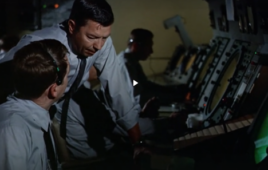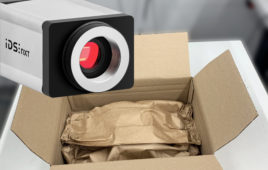The current telecommunications business model is not sustainable; the rise in the number of connected devices tapping into telecom resources is straining energy resources to and beyond the breaking point.
Energy usage within data centers and central offices to drive those outside devices and water usage to cool the equipment doing the driving in the office structures is creating a “completely unsustainable trend” for telecoms, Jakob Carnemark, CEO of Aligned Energy said at a panel session Wednesday at Genband’s Perspectives14 conference in Orlando.
Carnemark, whose company offers energy-efficient technology and consulting solutions, pointed to a “mismatch of space” within current structures that includes driving more equipment than is needed and an infrastructure that is “not fully utilized.” Old energy-inefficient equipment is drawing more power and water to drive a bevy of new devices in a model that must soon reach its limit, he added.
Murat Armbuster, CEO of energy firm CoEfficient, pointed out that investing in more energy-efficient technologies can save the telcos enough money to pay back the investment. On top of that, he said, more efficient technology could remove the need for some actual physical structures that could reap real estate benefits.
“A lot of these central offices are in very good real estate areas,” Carnemark agreed.
While the benefits are real—and in some cases the need for restructuring essential—the road to change is not necessarily smooth, with the change out to a “much smaller footprint but higher density” akin to “removing the motor from a car as it’s speeding down the highway,” Carnemark added.
It’s made even more difficult by a slowly moving regulatory environment that keeps telecom companies guessing where they should invest funds in network upgrades, said Justen Davis, senior director of voice strategy and development for CenturyLink, pointing to his company’s move to all-IP networks.
“It’s hard to go in and make that change (to all IP networks) without knowing where regulation is going to land,” Davis said, citing concerns around 911 service and rural customers and the typical slowness of government bureaucracy on every level to confront change. “How do you speed up government? It’s really education. We really have to help our policy and regulatory people understand. “
For Davis total change is not an attractive option. With a huge embedded base of technology, CenturyLink’s preferred course is “taking technology and advancements and integrating them so that some of it can stay in place,” he said.
Ideally, Davis said, he would like to move more into a server-based ecosystem where he can achieve reductions in off-peak operations by putting unused servers into dormant modes. This would allow him to “conserve as much as possible. It’s just a trade-off f the technology of today with the technology of tomorrow.”
Telecom sustainability, however, is not limited to how much the service providers are willing to spend on new technology or even whether they can do so with a reasonable payback. It is an environmental issue aggravated by the fact that the telecommunications industry consumes 40 percent of the world’s water to cool its equipment, Carnemark said.
Two factors, the panelists agreed, could make change happen sooner than later. The first is the thing that always creates change: cost.
“Most technology shifts are driven by a collapse of the pricing model,” said Carnemark.
That’s a big factor for carriers who are “very concerned with the bottom line,” said Jennifer Pigg, vice president of research for Yankee Group. “They’re not going to go with a more expensive technology even if it’s more efficient if the return (on investment) is three or four years.”
The second factor that could drive change is a natural disaster, such as the derecho or Superstorm Sandy which devastated parts of the East Coast several years ago and caused telecom companies to readjust their operations.
“It would probably take something catastrophic to happen” to accelerate the change, Davis agreed.
Greg Zweig, Genband’s director of solutions marketing, in a separate interview, pointed out that it is not just the incumbent telecommunications industry that needs to rethink its energy consumption. Cable operators, even with newer plant, are in need of change as well.
“It’s about cost. Drive costs down to get better service,” he said.
That means driving cost out of the network and out of the facilities used to feed that network by using a higher density, higher performance cloud distributed session border control (SBC) architecture to keep media close to the end user, he said.
“In some cases,” Zweig said, such a network change “collapses (the infrastructure) of whole buildings.”
Over the next couple years the question of whether to move to more energy-efficient operations could be moot. With global standards demanding a reduction in the nation’s carbon dioxide footprint—much of which is driven by high energy users like telecom companies feeding multiple fixed and mobile devices.
“There needs to be some disruptive technologies that come along to abate that trend,” said Carnemark. Power consumption “really needs to be managed.”
Filed Under: Industry regulations




